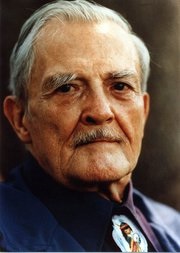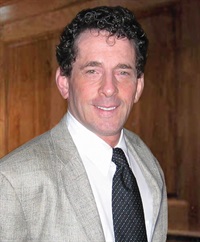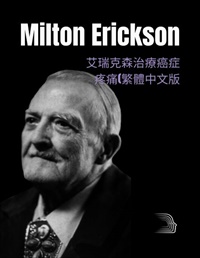Dr. Erickson's Approach to Cancer Pain 艾瑞克森治療癌症疼痛(繁體中文版)
- Average Rating:
- Not yet rated
- Topic Areas:
- Pain and Healing | Milton Erickson | Ericksonian Hypnosis and Therapy Techniques | Hypnosis | Strategic Therapy | Utilization | Cancer
- Categories:
- Erickson Materials | Erickson Streaming Video Collection | Milton H. Erickson Collections | World Languages | Chinese
- Faculty:
- Milton H. Erickson MD | Jeffrey Zeig, PhD
- Course Levels:
- Master Degree or Higher in Health-Related Field
- Duration:
- 1 hour
- Format:
- Audio and Video
- Original Program Date:
- May 07, 2020
- License:
- Never Expires.
Description
內容描述:
這影片裡艾瑞克森專注討論癌症病人的無法解決疼痛,以及如何運用創造力治療、減輕癌症病人的疼痛。
米爾頓艾瑞克森很少談論教條、理論,他是一個創造獨特體驗的催眠大師。大部分時間,他會帶給病人一種前所未有的獨特體驗。他也經常使用多層次溝通:在表面社交層面他在說一件事,在心裡的心靈層面談論另一種意義,透過故事和隱喻,產生類似於禪宗大師所用的平行溝通效果。
這個影片裡艾瑞克森醫師談論三個不同疼痛案例,都是運用順勢而為的核心原則做治療。順勢而為是所有問題的核心治療方針,也是艾瑞克森醫師醫生奉行的原則。在他自己的個人生活上和專業上,處處可見順勢而為的痕跡。 影片裡,他告訴我們無論個案帶來什麼,我們都可以順勢而為,把逆境變成順境,把缺點變成優點。透過順勢而為替自己以及別人的生命增添色彩。
艾瑞克森在這影片中展現另一個偉大能力是策略性溝通。策略性溝通是運用一系列的策略性步驟,目的在產生更好的治療效果。治療師可能一開始有個目標在心裡,你想要幫助個案創造什麼體驗?然後決定一個治療方向,最終,完成所預定的目標,帶給個案獨特的美好體驗。
艾瑞克森撰寫大量關於疼痛管理的學術文章。這也是因為他終其一生都在面對小兒麻痺的後遺症以及長期慢性疼痛。艾瑞克森所用在別人身上的方法,他總是先在自己身上實驗、運用。他是一個受傷的偉大療癒者,不僅療癒自己、幫助許多人、更傳承給他的學生們療癒能力去幫助更多人。
Credits
Faculty

Milton H. Erickson MD Related Seminars and Products
Milton H. Erickson, MD, was an American psychiatrist who specialized in medical hypnosis and family therapy. He was founding president of the American Society for Clinical Hypnosis and noted for his approach to the unconscious mind as creative and solution-generating.
Dr. Erickson was plagued with enormous physical handicaps for most of his life. At age 17, he contracted polio and was so severely paralyzed that doctors believed he would die. While recovering in bed, almost entirely lame and unable to speak, he became strongly aware of the significance of nonverbal communication – body language, tone of voice, and the way that these nonverbal expressions often directly contradicted the verbal ones. He also began to have “body memories” of the muscular activity of his own body. By concentrating on these memories, he slowly began to regain control of parts of his body to the point where he was eventually able to talk and use his arms again. His doctor recommended exercising his upper body only so Milton Erickson planned a 1,000 miles canoe trip to build up the strength to attend college. His adventure was challenging, and although he still did not have full use of his legs at the end, he was able to walk with a cane.
The Ericksonian approach departs from traditional hypnosis in a variety of ways. While the process of hypnosis has customarily been conceptualized as a matter of the therapist issuing standardized instructions to a passive patient, Ericksonian hypnosis stresses the importance of the interactive therapeutic relationship and purposeful engagement of the inner resources and experiential life of the subject. Dr. Erickson revolutionized the practice of hypnotherapy by coalescing numerous original concepts and patterns of communication into the field.
The novel psychotherapeutic strategies which Dr. Erickson employed in his treatment of individuals, couples, and families derived from his hypnotic orientation. Although he was known as the world’s leading hypnotherapist, Dr. Erickson used formal hypnosis in only one-fifth of his cases in clinical practice.
Dr. Erickson effected a fundamental shift in modern psychotherapy. Many elements of the Ericksonian perspective which were once considered extreme are now incorporated into the mainstream of contemporary practice.

Jeffrey Zeig, PhD Related Seminars and Products
Jeffrey K. Zeig, PhD, is the Founder and Director of the Milton H. Erickson Foundation and is president of Zeig, Tucker & Theisen, Inc., publishers in the behavioral sciences. He has edited, co-edited, authored or coauthored more than 20 books on psychotherapy that appear in twelve foreign languages. Dr. Zeig is a psychologist and marriage and family therapist in private practice in Phoenix, Arizona.


